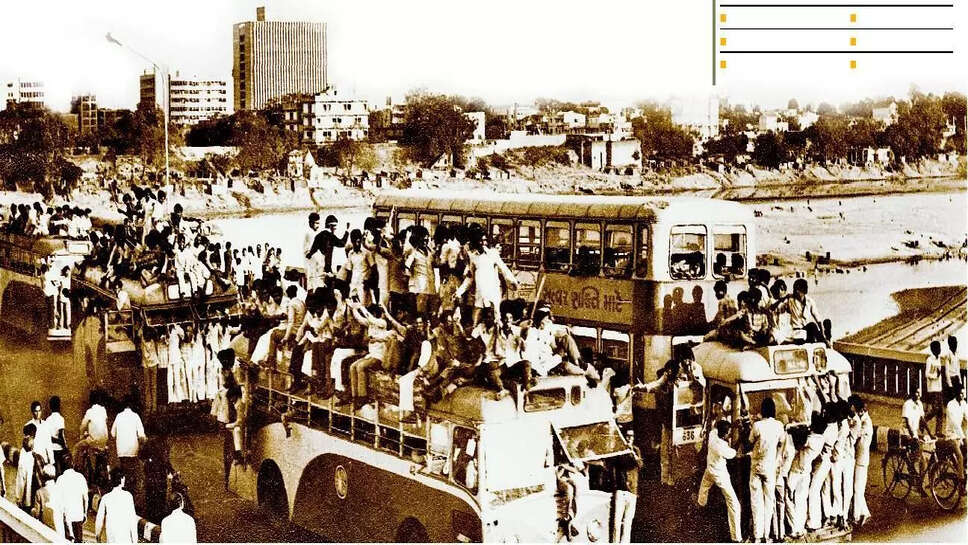How Gujarat’s Students Sparked a Grassroots Revolution That Lit Up a Nation

In a country of over a billion dreams, it often takes a spark from the grassroots to ignite change that reaches far and wide. Such was the story in Gujarat, where a group of determined students, armed with little more than conviction, curiosity, and commitment, lit a flame of innovation and hope—one that would soon transform into a beacon for communities across the state and beyond.
The tale begins not in polished labs or gleaming campuses, but in modest classrooms, village schools, and dusty corners of rural Gujarat. What started as a small student-led initiative gradually evolved into a movement that not only tackled local issues but inspired solutions with national relevance.
A Spark in the Dark
The origins of the movement were humble. A group of school and college students in Gujarat were disturbed by the lack of access to electricity in their nearby villages. While the cities glowed with neon lights and air-conditioned malls, just miles away, children struggled to study after sundown, elders managed without fans in sweltering heat, and entire communities fell into darkness night after night.
Rather than accept this disparity, the students decided to act. Their goal wasn’t political or profit-driven—it was simply to bring light to those who lived without it. This commitment to change, grounded in empathy and social awareness, became the force that propelled them forward.
Innovation by the People
The group began by studying the problem, collecting data, and understanding the root causes of energy poverty. They worked after school, during vacations, and on weekends, reaching out to local electricians, retired engineers, and renewable energy experts. With little funding, they salvaged old electronics, recycled solar panels, and learned how to build low-cost lighting systems using LEDs and batteries.
What followed was the creation of small, functional solar-powered lighting kits. They weren’t flashy, but they were transformative. A simple solar lamp with a battery pack allowed students in nearby villages to study at night. A tiny solar fan helped a grandmother sleep through the summer heat. And just like that, a ray of hope broke through the darkness.
The students didn’t stop at just building lamps. They organized training workshops in rural schools, taught others how to replicate the model, and even documented their learnings so that others could benefit. Their initiative, which started as a class project, soon became a ripple across Gujarat.
From Project to Movement
Word of the students’ work began to spread. Local newspapers picked up the story. Schoolteachers in neighboring districts asked for help setting up similar models. District officials started taking notice. What had started as a grassroots experiment was now being talked about in administrative circles as a possible template for rural electrification on a small scale.
Inspired by their success, the students expanded their scope. They began tackling other issues affecting rural communities—water conservation, waste management, digital education access, and more. Each project followed the same principle: local problems, low-cost solutions, led by the youth.
It was no longer just about lamps—it was about leadership, community, and innovation. And all of it had begun with a group of young minds who simply refused to accept that nothing could be done.
The Beacon Grows Brighter
As the initiative grew, colleges and universities began to support the movement. Technical institutions provided mentorship, NGOs came forward with small grants, and government departments opened up innovation challenge grants to students across the state.
More importantly, a shift in mindset began to take root. Young people from both urban and rural Gujarat began to believe that they too could make a difference. The movement gave them tools, inspiration, and a support system. It wasn’t just about solving problems—it was about creating a generation that saw itself as capable of shaping its future.
Soon, students from other states began reaching out. They wanted to learn, to replicate, to participate. And what began as a flicker of hope in Gujarat became a beacon across India.
Real Impact, Real Change
The impact on the ground was profound. In villages where children previously studied under kerosene lamps, there was now safe, clean solar lighting. In areas where waste was dumped in open fields, students built compost pits and awareness campaigns. In drought-prone areas, rainwater harvesting systems built by student groups began to slowly change water availability patterns.
What set the Gujarat students apart was not just what they did, but how they did it. Their solutions were inclusive, affordable, replicable, and sustainable. They didn’t rely on top-down schemes, but instead used their understanding of local culture, context, and community to make every initiative rooted in reality.
Lessons in Leadership
The story of these Gujarat students is more than a feel-good anecdote. It is a powerful lesson in leadership, grassroots innovation, and the capacity of young minds to bring lasting change. They showed that the energy to solve big problems doesn’t always come from big institutions—but from small teams that care deeply and act boldly.
They reminded society that true education is not about grades and ranks, but about awareness, compassion, and action. By stepping outside their classrooms and into the real world, these students learned and taught lessons no textbook could ever contain.
They also reminded policy-makers, educators, and citizens that youth engagement is not a luxury—it is a necessity. When students are empowered, the entire ecosystem benefits.
Looking Forward: Lighting the Path for Others
Today, the story continues. Many of the original student leaders have gone on to pursue careers in engineering, social work, and public policy. But they continue to mentor new batches of young changemakers, passing the torch of service and innovation.
Across Gujarat, student-led innovation cells have sprung up in schools and colleges. Local governments now involve youth committees in planning development projects. And in many communities, students are no longer just learners—they are problem-solvers, creators, and leaders.
What began with a simple idea—to light up a village—has now lit up thousands of minds.
The phrase “showed the light” is often used metaphorically. But in Gujarat, a group of students did it quite literally. They brought light into homes, schools, and hearts. More than that, they sparked a transformation in how young people see their role in society.
They did not wait for permission. They did not demand applause. They simply took a step forward—and kept walking.
Now, their story shines as a beacon, guiding others on the path of service, innovation, and hope. And in that light, a brighter future for India is taking shape—one student at a time.
